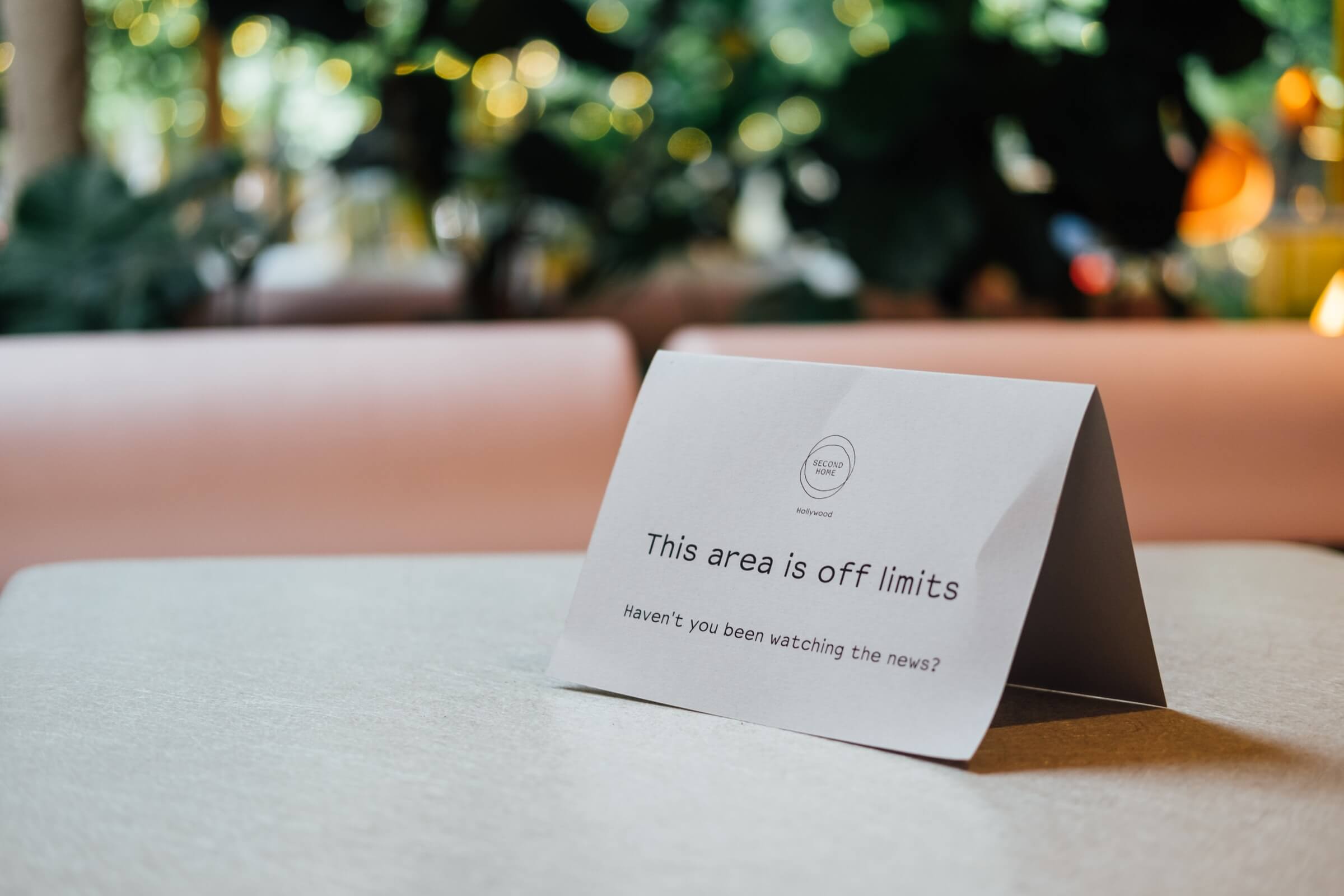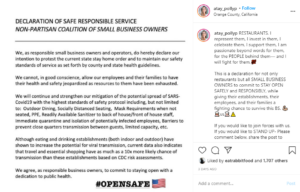California’s Restrictive Regional Stay-at-Home Order Rescinded
by David Klemt
Expectation became reality yesterday when Governor Gavin Newsom rescinded California’s highly restrictive regional stay-at-home order.
It had been reported for at least a day prior that Gov. Newsom was expected to do so on January 25.
The order, which choked the life out of restaurants, bars and other businesses, has been in place since the start of December 2020.
As we reported several weeks ago, a group of Orange County operators pushed back against the order shortly after it was imposed. The #OPENSAFE collective released a statement announcing their intention to protest Gov. Newsom’s stay-at-home order by remaining open for in-person dining.
Other states that imposed seemingly arbitrary and illogical orders that crushed restaurants and bars also experienced open defiance from operators. One of the highest-profile protests came from New York City restaurants.
Speaking for the first time in well over a week about California’s efforts to combat Covid-19, Gov. Newsom said, “Everything that should be up is up, everything that should be down is down.”
That’s an interesting claim given California experienced a record number of Covid-19-related deaths on January 21 with 761. During his press conference, the embattled governor claimed he lifted his stay-at-home order due to ICU numbers and not because of the multiple lawsuits filed against him or the current recall campaign.
Rather, Gov. Newsom said that he made his decision based on Covid-19 cases and hospitalizations decreasing while vaccination rates are reportedly trending upward. However, as one source cited, just 26 percent of California’s allotted vaccine doses had been administered as of last week.
The rescinding of the regional stay-at-home order doesn’t mean that businesses can reopen and resume operations as usual. Each of the state’s counties will be color-coded according to California’s “Blueprint for a Safer Economy.” Projections will be set aside for actual transmission rate data.
Tier 4 is color-coded yellow and its Covid-19 transmission risk is labeled “Minimal.” Tier 3 is orange and “Moderate,” where as Tier 2 is red and “Substantial.” Tier 1, which is purple, is labeled “Widespread.”
At the moment, most counties in California are purple.
Restaurants located in a Tier 1 county can offer only outdoor in-person dining. Those in Tier 2 can offer indoor dining but only at 25-percent capacity or 100-person maximum capacity (whichever is lower). Tier 3 bumps capacity to 50 percent or 200 people, and Tier 4 dictates a maximum of 50 percent capacity.
As expected, bars (along with breweries distilleries) that don’t serve food receive much harsher treatment than restaurants. Those located in a county designated purple or red must close. Bars in orange counties can open for outdoor service only, and those in yellow counties can offer indoor service at 50-percent maximum capacity. Bars “where [a] meal is provided” follow restaurant guidelines for the four applicable tiers.
Movie theaters, for context concerning how bars are being treated, are subject to the same guidance as restaurants in California’s blueprint. Such venues aren’t exactly known for providing meals.
Before operators who have chosen to work within California’s guidelines throw their doors open, they need to know two things. One, county officials are permitted to impose their own restrictions. If they choose to do so, those restrictions can be stricter than those that come down from state officials.
Two, for those operators in Los Angeles County, confusion remains regarding outdoor dining. Some interpret the rescinding of the state’s prohibition on outdoor dining as a lifting the ban. However, LA County implemented its own ban before the state did so. That county-issued ban expired on December 16 but outdoor dining was banned under the statewide stay-at-home order.
It may seem cut and dry that the expiration of the county order and the lifting of the state’s ban shifts LA County to Tier 1 restrictions. Operators should make sure they’re clear to resume outdoor service before incurring the costs associated with doing so.
How long California will revert back to the state’s Blueprint for a Safer Economy is anyone’s guess. Operators in several states have found themselves caught in a vicious open-close, open-close vortex. At any rate, 25-percent capacity restrictions will still more than likely make it more cost-effective for some operations to remain closed for indoor service.
Image: Paul Hanaoka on Unsplash



